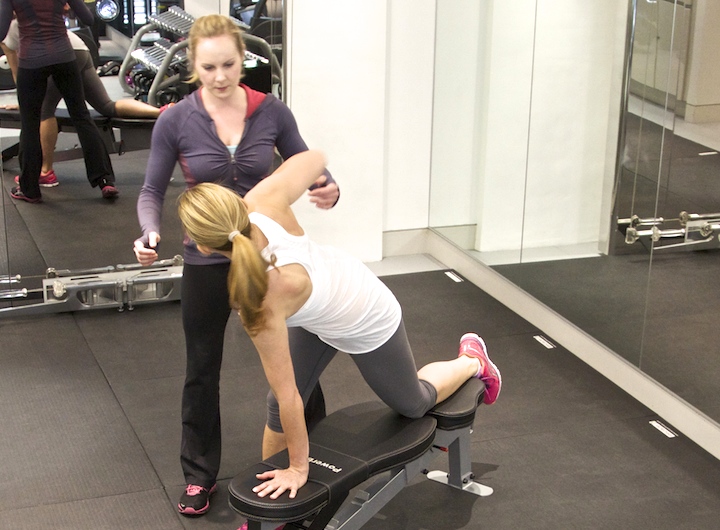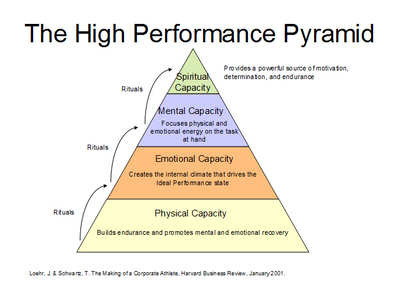When I'm out and about socially and I tell people what I do I get two reactions - one they ask me what they should do to look like Channing Tatum or Miranda Kerr or they tell me what they do for fitness. I love hearing about what activities people engage in. I feel like more and more Londoners are taking an active role in keeping themselves healthy and fit and this makes me very happy! Sometimes and of late increasingly so, some people engage me in a debate about whether personal training is really valid any more. What with the rise of crossfit, balletbarre style classes, group pilates and bootcamps fitness has never been more affordable. But is it cost effective? Are you getting pound of muscle for pound sterling? Perhaps it's less about cost and more about value. Read on to find out why Personal Training is still valid and why, if you haven't already invested, you should seriously consider it.
1 on 1 produces tailored results
Ok, subtly take a look to your left and observe the person next to you. Notice how their body shape, size, proportions are completely different to yours. Ok you can stop looking now before you get in trouble! Think about what is important to you when it comes to fitness, health and how you want your body to look and feel. Do you think the person to your left has exactly the same desires? Probably not. I train women who want a warrior princess look - toned, nicely shaped muscles but not big and bulky and I also train women who want to look like svelte ballet dancers. I train men who don't want their legs to get too big because they wear slender fit jeans but they want a nicely defined upper body. And I train men who want to look like The Rock.
The greatest asset of Personal Training is it is PERSONAL. It means that the session is dedicated, tailored, devoted to how you want your body to look and feel and what you want it to do for sports and life. The compromise you make when you go to a class is that if you want bigger biceps but the lady next to you wants a smaller butt - you just have to go with the flow of the class and hope you get what you need out of it.
Much more of what you need
Any good Personal Trainer (and they are sadly few and far between) will give you what you want and most importantly what you need - which you are probably not even aware of until you learn of your imbalances or weaknesses.
In a session that is dedicated to your wants and needs you will progress much faster and more effectively, correcting your personal imbalances and weaknesses. You may also have functional or sports imbalances that need constant monitoring - such as excessive spinal flexion and weak extensors from daily cycling (find out more about this here), or a rotational imbalance from tennis.
What you might not know in a group class is that an exercise you are doing may be contributing to your imbalance and could lead to an injury. If there are 6, 16 or 60 people in your class an instructor may miss an imbalance that you have. Imagine if even in a class of 6 for every exercise each person needed a slight modification? The class just wouldn't flow. If you know about what imbalances you have and what is good and not so good for you to do then participating in a class becomes more effective for you.
The Little Things
Classes definitely take a more generalist approach to exercise. If if the class is labelled thighs, bums and tums the exercises are designed for many people to participate and follow along. Even a CrossFit class has certain staple exercises and movement patterns that everyone does.
However, what if I told you that to bench heavier you need to train trap 3 and external rotation in the scapular plane? And that weakness in these support muscles not only leads to a plateau in how much you can lift but also leaves you more vulnerable to injury. You won't hear these terms bandied around in a class. In a Personal Training session, a good one, your trainer will cover all bases of stability, support and function of a movement pattern. It is not about the act of benching, it is about understanding and making sure all parts of movement pattern are considered and trained effectively.
The Whole Picture
These days, it is not enough for a trainer to know how to manipulate the variables of training and training zones. Good Personal Trainers factor in all the variables of health and wellness. They teach you about the importance of nutrition for the specific type of training you are doing, they teach you how to warm up and mobilise before your sports games, they educate you on the role of sleep, hydration, and stress on your progress. There is no point participating in a high intensity cardio class 5 days a week if your nutrition doesn't support your activity, you don't sleep enough and you have a mega stressful job. You'll end up gaining weight not losing in this scenario (for more information on how this happens click here). Whatever activities you are involved in and however you choose to train for them, exercise is part of a lifestyle. To support that lifestyle choice all the other health factors need to be considered for it to serve you effectively.
A Little of the Good Stuff
So, now I've preached my case for the value of personal training have a think about how it might serve you. Just to clarify, I am not against classes. Like I say to all my clients, the key to any successful exercise is always good instructors. And, it never hurts to learn a bit more about what your body needs so that when you attend classes you can make them work for you effectively.
I've had people come to me for a short while to learn how to train effectively and they happily apply this to the classes they attend. Some of my clients work with me a few times a week regularly and also participate in classes. And for the very busy executives and entrepreneurs I take care of all their fitness needs so all they have to do is show up - no thinking required! For more information about Precision Movement can take care of your personal fitness needs please contact KT at KT@precisionmovement.co.uk.































